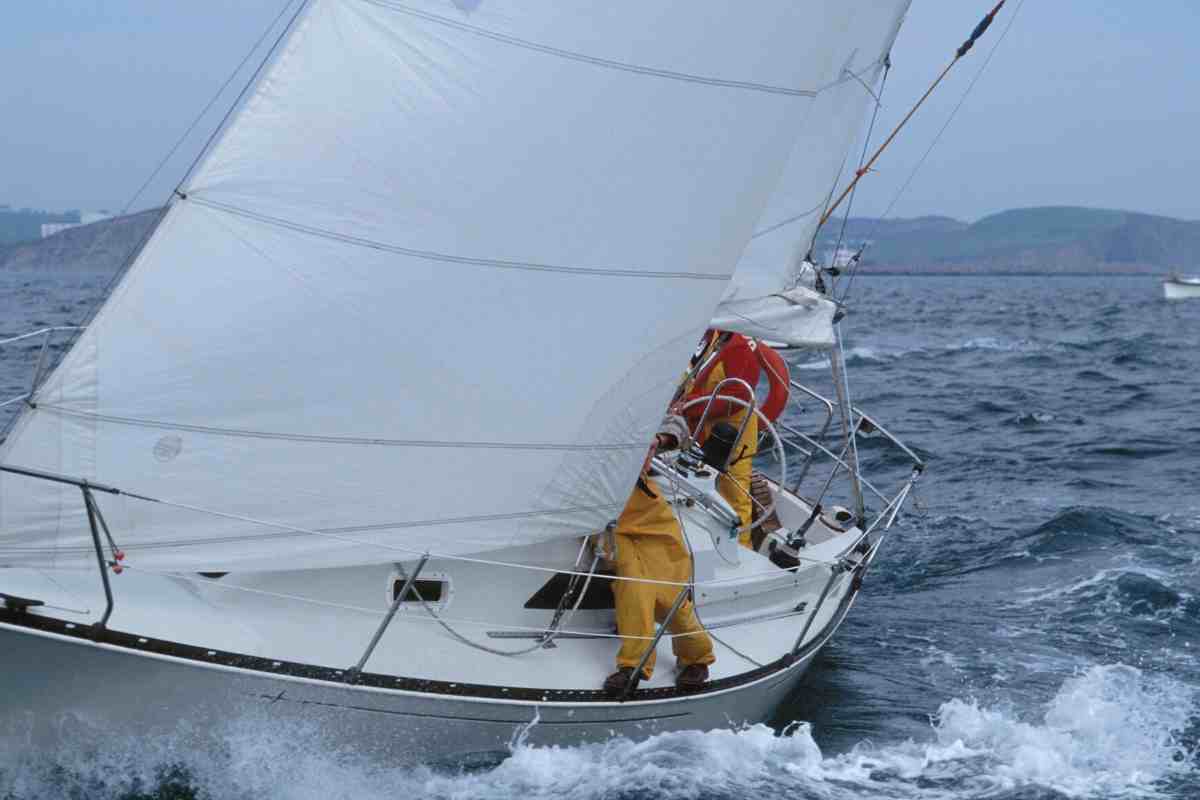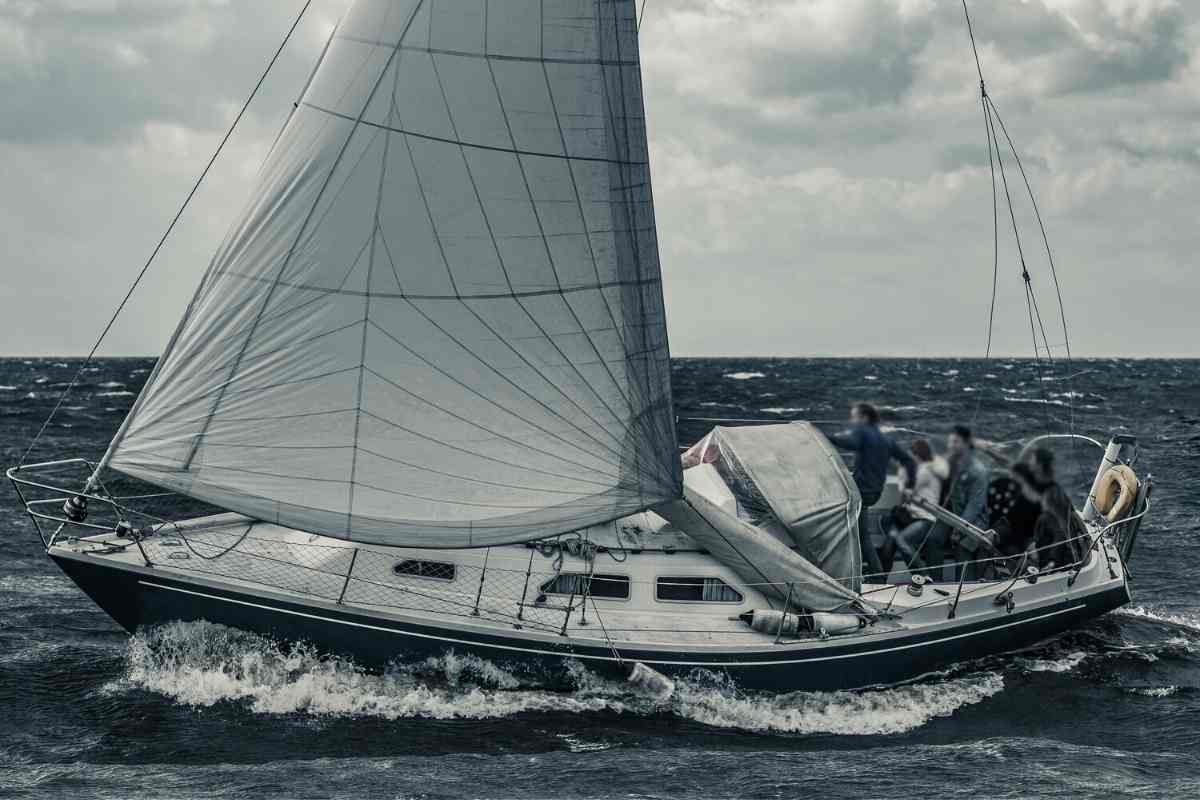What Causes A Sailboat To Capsize?
What could be more exciting than sailing your boat cost the open ocean, the wind in your sails and a cool breeze blowing across waves? Unfortunately, if you see a storm spring up on the horizon, your dreamy day can quickly turn into a disaster. Capsizing is a primary fear of many sailors, not without good reason.
What Causes A Sailboat To Capsize?
What causes a sailboat to capsize? Sailboats capsize because they are unstable. They may become unstable because of severe waves and wind, an unbalanced cargo or crew, carrying too much weight, sailing under too much sail, or taking on water. Multihull sailboats are less likely to capsize than monohull sailboats. Boats with a sturdy keel are less likely to capsize than boats without one.
If you’re scared of capsizing your sailboat, there is reason to worry. Capsizing is a real risk for sailboats. However, when sailed under the correct conditions and with the right handling, it is very rare for a larger sailboat to capsize.
Even smaller sailboats can be handled without much probability of capsizing when done properly. This is what you need to know about what causes sailboats to capsize and how to avoid it.
Why Might a Boat Capsize?
Here are the primary reasons why your boat might capsize. Keep in mind that these causes for capsize often occur in conjunction with one another.
Instability
A sailboat capsizes because, for some reason, it has become unstable. How weight is distributed across your sailboat determines whether your boat will tip over enough to be filled with water and capsize.
Sometimes a boat will partially capsize and fill with water but right itself or remain floating. This is known as swamping. A swamped boat may or may not capsize. Here are some reasons that a boat might be unstable.
Too much or unbalanced cargo or crew
One way that sailboats capsize is if the weight that is on them is unbalanced. One of the most significant weights for smaller sailboats are the people on them.
Having everyone on one side of the boat( for instance, if someone has seen a whale) can result in the boat leaning that way. This makes the boat much more likely to capsize.

Unbalanced equipment or cargo can also cause a boat to become unstable. Even if cargo is arranged appropriately at the beginning of a trip, it may shift in rough water, which makes it unbalanced.
Leaking
Naturally, your sailboat leaking is a very bad thing. Taking on water because of rough seas can also result in a similar result as leaking.
As water builds up in the hull of your boat, it will tend to unbalance your boat resulting in an unnatural motion against the waves, which makes it much more likely that you will capsize.
Storms
Almost all sailboat capsizing cases are associated with storms of some kind. Strong winds and high winds make it much more difficult for sailors to navigate safely.
Sailboats that are primarily dependent on their sails can become helpless in the water if the wind is too strong for them to put the sails up. As waves rock the boat back and forth, capsizing becomes much more likely.
Having Too Much Sail Up
It’s a lot of fun to push your sailboat to go as fast as possible, but the more sails that you have up and the faster your sailboat is going, the more potential there is for capsize. Capsize due to too much sail is especially likely if you are already pushing your boat and there is a sudden gust.
Wind coming from an unexpected direction or unexpectedly strongly can shove your boat’s nose into the water or flip it sideways, instantly capsizing it. A sailboat that goes down under full sail will be very difficult to right.
The chances are great that your sails will be damaged beyond repair after such a capsize.
Causes of Instability and How to Prevent Them
| ProblemSolutionToo much or unbalanced cargo or crewLoad less, choose a larger boat, or ask crew to move around as needed to adjust weightLeakingChoose a boat made of unsinkable material. Check for leaks, especially in rough seas. | |
| Storms | Only go into open water in a sea-worthy boat. Multihulls can often handle storms better, especially in less experienced hands |
| Having Too Much Sail Up | NEVER sail under full sails when a storm is approaching. Sail with reduced main if at all. |
How Dangerous is Capsizing?
An old adage of sailing is that you should capsize at least a few times before you can consider yourself a real sailor.
This is one of the reasons it is so important to start out your sailing on small, inexpensive crafts that you can afford to capsize and right a few times. The bigger the boat, the more damage is associated with capsizing.
Overturning deliberately under test conditions so that you learn what it’s like and what it takes to capsize your boat is quite safe. Generally, capsizing in sheltered waters is not very dangerous.
However, capsizing in open water can be very dangerous, especially if it happens in bad weather, as it so often does. However, there are a few ways to mitigate the danger of capsizing in open water.
How To Reduce Your Risk Of Capsizing
Make Sure Your Boat Floats
Some types of boats have flotation requirements, and other boat manufacturers choose to make boats that float because it is safer.
Some boats, like the Corsair Trimaran, are advertised to be practically unsinkable since they are made of a highly buoyant material that means no matter how many holes you put in or how much it fills with water, it won’t actually sink.
As long as you have something to hold onto, you will be much more likely to stay safe if your boat capsizes, this is why having a boat that can float even if it is severely damaged can be so important.
Wear Your Life Jacket
Many sailors don’t actually wear their life jacket most of the time that they’re on the water, but you should definitely put your life jacket on if conditions are getting worse or there’s any danger of capsizing.
If your boat is moving quickly, the weather is getting bad, or the sea is getting rough, put on your life jacket. A life jacket could dramatically increase your chances of surviving capsizing, even if you get separated from the boat.
Consider A Multihull Sailboat
Multihull sailboats are much less likely to capsize than monohull sailboats. A large part of the reason the first multihull was invented was to give sailors more stability.
The extra hulls, or amas, provide additional stability against the surface of the water, making it much more difficult for the main hull to flip over and fill with water.
For a multihull sailboat to capsize, it will need to be submerged completely underwater. Since most multihulls contain airlocked chambers and are very buoyant, it can be very hard to submerge and capsized the boat.
Never Sail With Full Sails in High Winds
Don’t give in to the temptation to push your sailboat as the wind gets heavier. If you want to sail in stormy conditions, reduce your sails to only the mainsail and drop the mainsail partially.
This will make it much less likely that you will capsize and allow you to drop the mainsail if you have to without damage to other sails.
It is much easier to drop one sail than to try to drop two, three, or even four sales just as a storm is developing. Only attempt sailing when conditions are worsening when you are an experienced sailor.
It’ll be very difficult to get the wind out of your sails to drop them once the storm gets going. If there’s any flaw in your equipment that prevents the sail from dropping, the consequences could be disastrous.
Choose A Sailboat With A Keel Or A Centerboard
Keels and centerboards are two ways of providing stability to your boat by offering a ballast to keep your boat’s bottom in the water.
Most larger sailboats have one, but small dinghies and some smaller racing boats may not.
Boats without a keel or centerboard are much more likely to capsize than boats that have a keel or centerboard, whether they are multihulls or monohulls.
What is Heeling and Does it Mean that I’m About to Capsize?
All sailboats heel to some degree. It happens when the wind fills the sail, causing pressure that pushes the sail down and the boat up. Whatever side of the boat the sails are on, the boat will heel to that side.
Boats with only one hull heel much more dramatically than boats with more than one Hull.

Some boats, like keelboats, have extensive ballasts that allow for extensive heeling. These boats can actually have the ocean lapping at the cockpit while still being perfectly safe.
Heeling can be scary for new sailors, but as long as it is done properly and your boat is designed to heel, there is no reason to be worried about it. Just sit back and enjoy the ride.
If you dislike the sensation of heeling and worry that you will capsize, considering a multihull sailboat. They are considerably less prone to heeling.
Whenever your boat is heeling, be sure that you ask your crew to go to the upwind side to balance out the weight. Remember never to let your passengers or crew all go to one side of the boat when you are under sail without taking the wind direction into account.
